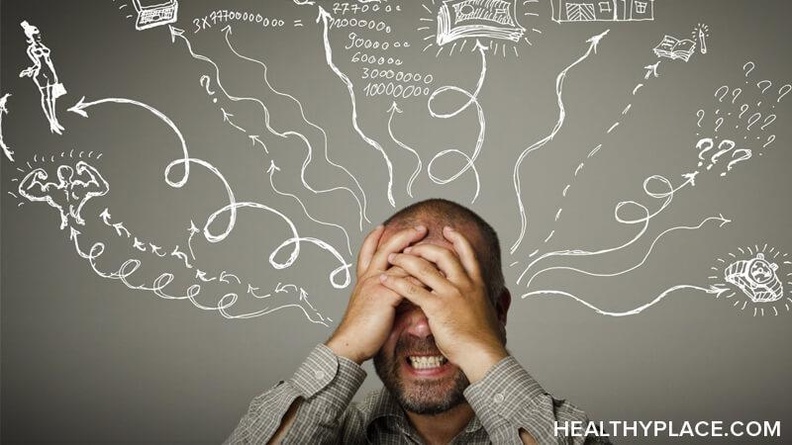Responding to Disclosure of Child Sexual Abuse
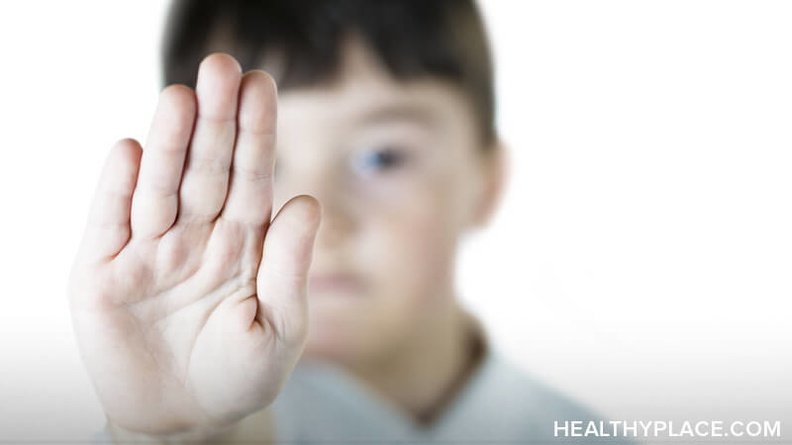
Learning that a child has been sexually abused can be emotionally unsettling. Some thoughts on what to say and what to do.
When a child tells an adult that he or she has been sexually abused, the adult may feel uncomfortable and may not know what to say or do. The following guidelines should be used when responding to children who say they have been sexually abused:
What to Say
If a child even hints in a vague way that sexual abuse has occurred, encourage him or her to talk freely. Don't make judgmental comments.
- Show that you understand and take seriously what the child is saying. Child and adolescent psychiatrists have found that children who are listened to and understood do much better than those who are not. The response to the disclosure of sexual abuse is critical to the child's ability to resolve and heal the trauma of sexual abuse.
- Assure the child that they did the right thing in telling. A child who is close to the abuser may feel guilty about revealing the secret. The child may feel frightened if the abuser has threatened to harm the child or other family members as punishment for telling the secret.
- Tell the child that he or she is not to blame for sexual abuse. Most children in attempting to make sense out of the abuse will believe that somehow they caused it or may even view it as a form of punishment for imagined or real wrongdoings.
- Finally, offer the child protection, and promise that you will promptly take steps to see that the abuse stops.
What to Do
Report any suspicion of child abuse. If the abuse is within the family, report it to the local Child Protection Agency. If the abuse is outside of the family, report it to the police or district attorney's office. Individuals reporting in good faith are immune from prosecution. The agency receiving the report will conduct an evaluation and will take action to protect the child.
Parents should consult with their pediatrician or family physician, who may refer them to a physician who specializes in evaluating and treating sexual abuse. The examining doctor will evaluate the child's condition and treat any physical problem related to the abuse, gather evidence to help protect the child, and reassure the child that he or she is all right.
Children who have been sexually abused should have an evaluation by a child and adolescent psychiatrist or other qualified mental health professionals to find out how the sexual abuse has affected them and to determine whether ongoing professional help is necessary for the child to deal with the trauma of the abuse. The child and adolescent psychiatrist can also provide support to other family members who may be upset by the abuse.
While most allegations of sexual abuse made by children are true, some false accusations may arise in custody disputes and in other situations. Occasionally, the court will ask a child and adolescent psychiatrist to help determine whether the child is telling the truth, or whether it will hurt the child to speak in court about the abuse.
When a child is asked as to testify, special considerations--such as videotaping, frequent breaks, exclusion of spectators, and the option not to look at the accused--make the experience much less stressful.
Adults, because of their maturity and knowledge, are always the ones to blame when they abuse children. Abused children should never be blamed.
When a child tells someone about sexual abuse, a supportive, caring response is the first step in getting help for the child and reestablishing their trust in adults.
Sources:
- American Academy of Child & Adolescent Psychiatry
APA Reference
Staff, H.
(2022, January 18). Responding to Disclosure of Child Sexual Abuse, HealthyPlace. Retrieved
on 2025, November 11 from https://www.healthyplace.com/parenting/abuse/responding-to-disclosure-of-child-sexual-abuse
How Does Bipolar Disorder Present in Children and Adolescents?
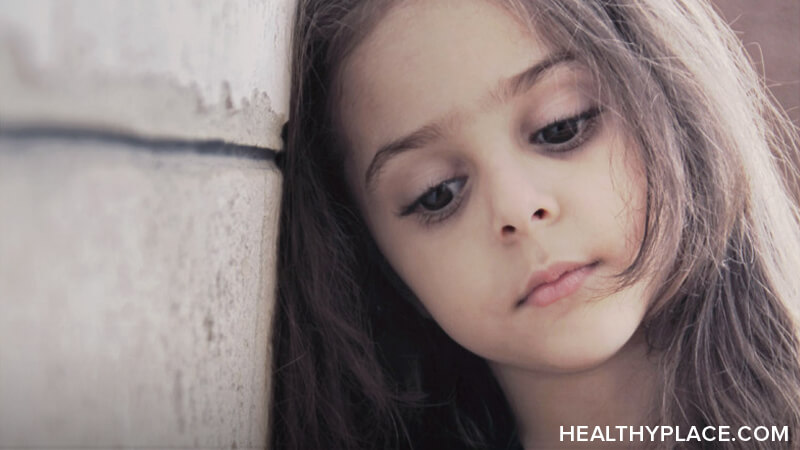
Even doctors have difficulty diagnosing bipolar disorder in children and teens because the typical symptoms of bipolar seen in adults may not be the same in children and adolescents.
Bipolar disorder is a controversial area within the field of children's mental health. Today, most doctors agree that it exists. The disagreement centers on the symptoms of bipolar disorder in young people and how they differ from those in adults.
When it comes to diagnosing young people vs. adults, bipolar disorder may look different. Children with bipolar disorder often have mood swings that shift rapidly over hours or even minutes, while adults' mood swings typically shift over days to weeks. Whereas adults with bipolar disorder generally have discrete periods of depression and discrete periods of mania, children with bipolar disorder are more likely to have moods that are not distinct. Children who develop the disorder very young are particularly likely to experience irritability and frequent mood shifts rather than discrete periods of mania and depression.
The first episode of bipolar disorder that a child or adolescent experiences may be in the form of depression, mania, or a combination of both. It may be difficult to identify a child's "first episode" of bipolar disorder if mania and depression occur at the same time, or if these moods occur chronically rather than during discrete periods of time.
During a depressive episode, children or adolescents may look frequently sad or tearful; they may be constantly irritable; or they may be tired, listless, or uninterested in favorite activities. Children or adolescents having an episode of mania often have more prominent irritability, aggression, and inconsolability than adults having an episode of mania. In a manic or mixed state they may be excessively giddy, happy, or silly; they may be intensely irritable, aggressive or inconsolable; and there may be changes in their sleep patterns. They may be restless, persistently active, and more talkative than usual; they may display behavior that is risky or hypersexual beyond what is age-appropriate; and they may have grandiose thoughts, such as the belief that they are more powerful than others; they may also hear voices. Explosive outbursts may involve physical aggression or extended, rageful tantrums.
Children with bipolar disorder have moods that often seem to occur unexpectedly and appear unresponsive to normally effective parenting efforts. Parents often become discouraged and exhausted by their child's difficult and erratic behaviors. They may try almost anything to avoid or stop the severe tantrums that can last for hours, and often end up feeling helpless to alleviate their child's suffering. They may feel guilty when neither "tough love" nor consoling the child works. Worst of all, children with bipolar disorder are frightened and confused by their own moods and often feel remorseful for the hurt they cause others when "under the influence" of a powerful mood.
A child or adolescent who first experiences symptoms of depression may in fact turn out to have bipolar disorder. Studies of children with depression show that 20 percent or more will go on to develop bipolar disorder, depending on the characteristics of the study population and the length of time they were followed. Since it is uncertain whether a child with a first episode of depression will later develop symptoms of mania, children with depression must be carefully monitored for the emergence of mania symptoms.
Because doctors only recently began to identify bipolar disorder in children, researchers have little data with which to predict the long-term course of the illness. It is not known whether early-onset bipolar disorder with rapidly shifting moods evolves over time if untreated into the more classic, episodic form of the disorder as the child reaches adulthood, or whether this outcome can be prevented by early intervention and treatment. Puberty is a time of high risk for the disorder to develop in individuals with genetic vulnerability.
If bipolar disorder is left untreated, all major realms of the child's life (including peer relationships, school functioning, and family functioning) are likely to suffer. Early treatment with proper medication and other interventions generally improves the long-term course of the illness. A trained clinician (such as a child psychiatrist, child psychologist, or pediatric neurologist) should integrate information from home, school, and the clinical visit to make a diagnosis of bipolar disorder.
Behavior At Home
A child or adolescent with bipolar disorder can behave quite differently at home than at school or in the doctor's office. Because the child appears different in different settings, diagnosing bipolar disorder sometimes invites disagreement between parents, schools, and clinicians. Children's behavior, which reflects their brain's mood regulation, may be well controlled at school or at a doctor's office, but the same child may have severe temper outbursts at home.
In general, young people with bipolar disorder are most symptomatic at home, since moods are harder to control when the child feels tired (morning or evening), stressed by the intensity of family relationships, or pressured by the demands of daily responsibilities (such as homework and having to get ready for school on time). They are also more likely to show troubling emotions such as anger, anxiety, and frustration when they are in the security and privacy of home and immediate family.
At home, children with bipolar disorder may have some or all of the symptoms listed below.
- Rapidly shifting moods, from extreme happiness or silliness to tearfulness for no apparent reason
- Depressed or downcast mood, including disinterest in things they used to enjoy, or showing little expression
- Talk of suicide, self-harm behaviors, or hurting oneself or others may accompany depressed moods
- Manic (overexcited) or giddy mood
- Feelings of superiority, beliefs they can succeed in superhuman efforts, or risky behaviors may accompany the elevated moods
- Heightened sensitivity to perceived criticism. These children also are far more easily frustrated than a typical child.
- Impaired ability to plan, organize, concentrate, and use abstract reasoning
- Intense irritability accompanying the lows or the highs
- Rages, tantrums, crying spells, or explosive outbursts that can last hours and occur with small provocations (such as being told "no"). These episodes may be triggered more easily, occur multiple times each day or week, last longer, involve greater intensity, and require more recovery time than tantrums in other children.
- Episodes of unusual aggression, directed to the most available person. Family members, particularly parents and siblings, are often the primary targets.
- Restlessness or excessive physical activity, which is often chaotic
- Noticeable changes in sleep patterns including too much or too little sleep or difficulty falling asleep
- Side effects from medications, including cognitive effects that interfere with academic performance as well as physically uncomfortable side effects such as fatigue, excessive thirst, or stomach upset
- Unusual sexualized behaviors or comments
- Unusual beliefs ("People are talking in my closet") or fears ("Everyone at school hates me, so I'm not going")
Behavior At School
The differences in behaviors seen at home and at school can be dramatic. Because children react differently to the stresses of schoolwork, classroom noise, and transitions between classes and activities, some children show more severe symptoms at school, while others show more severe symptoms at home. Over time, these symptoms may worsen if the child is untreated, if the illness worsens, or if new problems develop. Families often seek treatment once problem behavior affects a child's school performance.
At school, children with bipolar disorder may be affected by some or all of the following symptoms.
- Fluctuations in cognitive abilities, alertness, processing speed, and concentration, which may occur from day to day and may reflect a child's overall mood stability
- Impaired ability to plan, organize, concentrate, and use abstract reasoning. This can affect behavior and academic performance.
- Heightened sensitivity to perceived criticism. These children also are far more easily frustrated than a typical child.
- Hostility or defiance at small provocations, as their moods dominate how they "hear" directions from a teacher
- Crying for no apparent reason, appearing upset out of proportion to actual events, or seeming inconsolable when distressed. School staff may notice how "irrational" these children seem to be, and that trying to reason with them often doesn't work. Most of these children suffer from extremely high levels of anxiety that interfere with their ability to logically assess a situation.
- Side effects from medications. Medications may have cognitive effects or physically uncomfortable side effects that interfere with school performance. Sharing information with the school about a child's medications may allow parents to obtain helpful feedback regarding overall effectiveness and any side effects that should be addressed.
- Other conditions, such as Attention Deficit/Hyperactivity Disorder (ADHD), which also may be present, compounding any learning challenges. Having one mental health condition does not "inoculate" the child from having other conditions as well.
- Learning disorders, which are often overlooked in this population. A child's difficulties or frustrations in school should not be presumed to be due entirely to the bipolar disorder. If the child still has academic difficulty after moods are treated, an educational evaluation for learning disabilities should be considered. A child's repeated reluctance to attend school may be an indicator of an undiagnosed learning disability.
At the Doctor's Office
The mood and behavior problems prompting an office visit may look different or may not be seen during the actual appointment. Clinicians may need to talk with parents, schools, and other important caregivers to evaluate a child's functioning in these areas.
Clinicians may have to deal with some of the following challenges in diagnosing and treating a child or adolescent with bipolar disorder.
- Symptoms vary over time and their appearance changes as the child grows. A clinician may need to see a child over a period time to determine the appropriate diagnosis.
- Symptoms caused by other medical conditions and by certain medications can be confused with bipolar disorder. These conditions include hyperthyroidism, seizure disorders, multiple sclerosis, strokes, tumors, and infections. Prescribed medications (steroids, antidepressants, stimulants, and some treatments for acne) and non-prescribed drugs (cocaine, amphetamine) can cause severe mood changes. Relevant laboratory tests and physical examinations may be helpful when bipolar disorder is considered.
- Bipolar disorder often first appears as depression in adolescents. Sudden onset depression, accompanied by sluggishness and excessive sleeping has been the most common "depression profile" seen in young people who later develop manic symptoms. A family history of bipolar disorder also increases the possibility that a depressed child may go on to develop bipolar disorder. In children with bipolar disorder, antidepressants may improve depressive symptoms but can sometimes unmask or worsen manic symptoms. Careful monitoring is recommended for any child receiving antidepressants.
- Bipolar disorder is often misdiagnosed as ADHD because some symptoms overlap, and many children with early onset of bipolar disorder also have ADHD. Stimulants (such as Ritalin, Concerta, Adderall) can aggravate mood instability, so it is important to stabilize the child's mood before beginning treatment for ADHD.
- Children may be unaware, or unwilling to admit, that their behavior may indicate symptoms of a disorder
- Especially during periods of relative wellness, older children and adolescents may refuse to take their medication. They may prefer to think of themselves as totally well.
- Medication side effects, such as significant weight gain or acne, may create further difficulties for the child
- Families may need to be coached about what they can reasonably expect from their child. Children who suffer from bipolar disorder will benefit if their family understands that therapy and medicines may reduce, but do not cure, symptoms.
- Families and children should be prepared to expect periodic relapses as part of the normal course of the illness. It can be very discouraging to see the return of prior symptoms that were presumed to be "conquered," but less so if it is understood that these temporary relapses are to be expected. Symptoms tend to return during times of high stress: the start of a new school year, holidays, physical illness, moving to a new community, and so on. These relapses may indicate the need to make an adjustment to medications or they may have a seasonal pattern
Sources:
- American Psychiatric Association, Diagnostic and Statistical Manual of Mental Disorders, 4th Edition. Washington, DC: American Psychiatric Association, 1994
- Dulcan, MK and Martini, DR. Concise Guide to Child and Adolescent Psychiatry, 2nd Edition. Washington, DC: American Psychiatric Association, 1999
- Lewis, Melvin, ed. Child and Adolescent Psychiatry: A Comprehensive Textbook, 3rd Edition. Philadelphia: Lippincott Williams and Wilkins, 2002
APA Reference
Staff, H.
(2022, January 18). How Does Bipolar Disorder Present in Children and Adolescents?, HealthyPlace. Retrieved
on 2025, November 11 from https://www.healthyplace.com/parenting/bipolar-children/how-does-bipolar-disorder-present-in-children-adolescents
Balanced Mental Health to Nurture Your Whole Self
What's going on at HealthyPlace this week?
- Balanced Mental Health to Nurture Your Whole Self
- From the HealthyPlace Mental Health Blogs
- What to Do When You Have Thoughts of Hurting Yourself
- Most Popular HealthyPlace Articles Shared by Facebook Fans
- Quote on Hurtful Relationships

Focusing on our mental health is incredibly important, and the fact that mental health is increasingly in the spotlight is a very good thing. Sometimes, though, it’s easy to become unbalanced in our focus. In wanting to boost mental health, we can end up neglecting other aspects of ourselves and our lives.
Quite likely, you care about your home and value having a roof over your head. Imagine that the roof of your house or building became your sole focus, and every day you went up there to tend to it, spending the entire day repairing little areas that became damaged by the night’s weather, removing debris, and cleaning it. You’d have one fantastic roof, but the rest of your home would fall into disrepair. Similarly, if we tend to only one aspect of ourselves, the rest of our being can suffer.
It can be difficult to listen to ourselves, though, especially when mental health challenges erode our self-confidence. Think of it as an ongoing adventure in self-discovery in which you gradually build the skills you need to listen to and honor yourself as your best mental health resource. Here are some tips for listening to and trusting yourself.
Create a balanced approach to mental health by intentionally nurturing your whole self:
- Engage in self-reflection to better understand what isn’t going right (or wasn’t right in your past)
- Also reflect on what is right and what good things you want more of in your life
- Attend to your thoughts and emotions
- Nourish your brain and body with wholesome foods that are good for your mental health
- Exercise in a way that is right for you
- Nurture your relationships
- Manage stress
The key to mental health and wellbeing is to actively care for your entire self and life experience. Start small, with one action step every day toward balanced wellbeing.
Recommended Video
The yin and yang of anxiety work together, so addressing one doesn't address the other. Learn more about the yin and yang of anxiety and how to treat them both. Take a look.
Mental Health and Wellbeing Articles
- What is Mental Wellbeing? Definition and Examples
- How to Achieve Mental Health and Wellbeing
- The Power of the Mind/Body Connection
- The Unexpected Effect of Exercise on My Mental Health
- Foods for Mental Health: What Effect Do They Have?
- What Are the Best Foods for Your Mental Health?
- What Causes Negative Thoughts and How to Stop Them?
- What Is Emotional Health? And How to Improve It?
- Building a Healthy Relationship
- The Relationship with Yourself: I’m Finally Doing Right by Me
Today's Question: What is one positive activity that you do for yourself that helps your mental health and total wellbeing? We invite you to participate by sharing your thoughts, experiences, and knowledge on the HealthyPlace Facebook page.
------------------------------------------------------------------
From the HealthyPlace Mental Health Blogs
On all our blogs, your comments and observations are welcomed.
- Introduction to Will Redmond, Author of 'Building Self-Esteem'
- A Lack of Control Can Activate My Eating Disorder Habits
- Introduction to Austin Harvey, Author of ‘Living with Adult ADHD’
- Missing My Emotional Support Animal (My Cat)
- Introduction to Emma Parten, Author of ‘Binge Eating Recovery’
- Stop Hurting Yourself: How to Make a Resolution and Keep It
- Schizoaffective Disorder and Positive Self-Talk
- Existing in Survival Mode Can Be Okay
- Overcoming Mental Health Stigma in the Latino Community
- Introduction to Kayla Davidson, Author of ‘Debunking Addiction’
- New Year, New Headway on Mental Health Stigma?
- Online Writing Groups Benefit My Mental Health
- Feeling Unworthy of My Anxiety
- The 'New Year, New You' Mantra Doesn't Work in ED Recovery
- New Year's Resolutions for Binge Eating Disorder Recovery
- Why I Love Baths to Cope with Anxiety
- Coping with Self-Harm and Dissociation
- Elder Abuse: What Is It and How Do You Recognize It?
- How Postpartum Depression Affects Your Family
- My Only Resolution Is To Cultivate Better Coping Mechanisms
Feel free to share your thoughts and comments at the bottom of any blog post. And visit the mental health blogs homepage for the latest posts.
------------------------------------------------------------------
From the HealthyPlace YouTube Channel
Do you have thoughts of hurting yourself? Kim does even though she's been in self-harm recovery for some time now. Find out how she deals with thoughts of hurting herself in this video. Take a look.
Subscribe to the HealthyPlace YouTube channel
------------------------------------------------------------------
Most Popular HealthyPlace Articles Shared by Facebook Fans
Here are the top 3 mental health articles HealthyPlace Facebook fans are recommending you read:
If you haven't already, I hope you'll like us on Facebook too. There are a lot of wonderful, supportive people there.
------------------------------------------------------------------
Quote on Hurtful Relationships
“I am slowly learning that some people are not good for me, no matter how much I love them.”
Read more quotes about abuse and toxic relationships.
------------------------------------------------------------------
That's it for now. If you know of anyone who can benefit from this newsletter or the HealthyPlace.com site, I hope you'll pass this onto them. Please share the newsletter on any social network you belong to. For updates throughout the week, follow us on Twitter, like us on Facebook, subscribe to our YouTube channel, or follow us on Instagram.
Thank you,
Deborah
Community Partner Team
HealthyPlace.com - America's Mental Health Channel
"When you're at HealthyPlace.com, you're never alone."
http://www.healthyplace.com
APA Reference
Peterson, T.
(2022, January 18). Balanced Mental Health to Nurture Your Whole Self, HealthyPlace. Retrieved
on 2025, November 11 from https://www.healthyplace.com/other-info/mental-health-newsletter/balanced-mental-health-to-nurture-your-whole-self
Parenting an ADHD Teenager
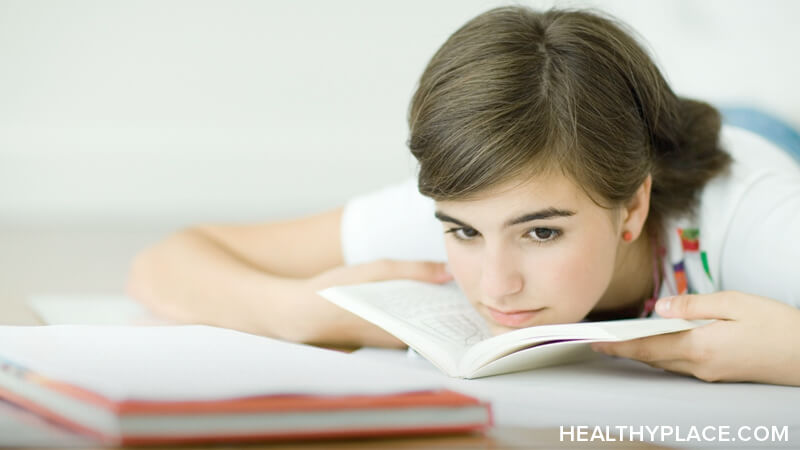
The teen years for a child with ADHD can be very difficult. Here are some insights for parents of ADHD teens regarding behaviors and considerations on allowing your ADHD teen to drive the car.
Adolescence is doubly hard for an ADHD Teen
Your child with ADHD has successfully navigated the early school years and is beginning his or her journey through middle school and high school. Although your child has been periodically evaluated through the years, this is a good time to have a complete re-evaluation of your child's health.
The teen years are challenging for most children; for the child with ADHD these years are doubly hard. All the adolescent problems—peer pressure, the fear of failure in both school and socially, low self-esteem—are harder for the ADHD child to handle. The desire to be independent, to try new and forbidden things—alcohol, drugs, and sexual activity—can lead to unforeseen consequences. The rules that once were, for the most part, followed, are often now flaunted. Parents may not agree with each other on how the teenager's behavior should be handled.
Now, more than ever, rules should be straightforward and easy to understand. Communication between the adolescent and parents can help the teenager to know the reasons for each rule. When a rule is set, it should be clear why the rule is set. Sometimes it helps to have a chart, posted usually in the kitchen, that lists all household rules and all rules for outside the home (social and school). Another chart could list household chores with space to check off a chore once it is done.
When rules are broken—and they will be—respond to this inappropriate behavior as calmly and matter-of-factly as possible. Use punishment sparingly. Even with teens, a time-out can work. Impulsivity and hot temper often accompany ADHD. A short time alone can help.
As the teenager spends more time away from home, there will be demands for a later curfew and the use of the car. Listen to your child's request, give reasons for your opinion and listen to his or her opinion, and negotiate. Communication, negotiation, and compromise will prove helpful.
Your ADHD Teenager and the Car
Teenagers, especially boys, begin talking about driving by the time they are 15. In some states, a learner's permit is available at 15 and a driver's license at 16. Statistics show that 16-year-old drivers have more accidents per driving mile than any other age. In the year 2000, 18 percent of those who died in speed-related crashes were youth ages 15 to 19. Sixty-six percent of these youth were not wearing safety belts. Youth with ADHD, in their first 2 to 5 years of driving, have nearly four times as many automobile accidents, are more likely to cause bodily injury in accidents, and have three times as many citations for speeding as the young drivers without ADHD.
Most states, after looking at the statistics for automobile accidents involving teenage drivers, have begun to use a graduated driver licensing system (GDL). This system eases young drivers onto the roads by a slow progression of exposure to more difficult driving experiences. The program, as developed by the National Highway Traffic Safety Administration and the American Association of Motor Vehicle Administrators, consists of three stages: learner's permit, intermediate (provisional) license, and full licensure. Drivers must demonstrate responsible driving behavior at each stage before advancing to the next level. During the learner's permit stage, a licensed adult must be in the car at all times. This period of time will give the learner a chance to practice, practice, practice. The more your child drives, the more efficient he or she will become. The sense of accomplishment the teenager with ADHD will feel when the coveted license is finally in his or her hands will make all the time and effort involved worthwhile.
Source: Excerpted from NIMH
APA Reference
Staff, H.
(2022, January 17). Parenting an ADHD Teenager, HealthyPlace. Retrieved
on 2025, November 11 from https://www.healthyplace.com/adhd/children-behavioral-issues/parenting-an-adhd-teenager
Addicted to Video Games
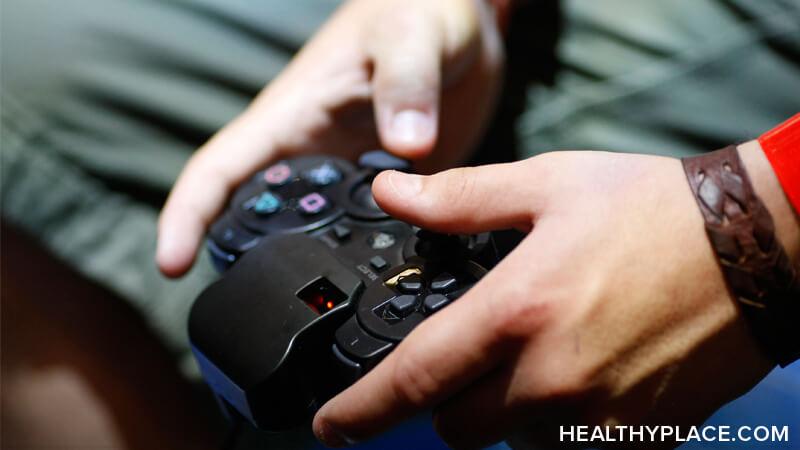
Compulsive video gaming is a modern-day psychological disorder. Read how parents can deal with video game addiction at home.
Is your child spending way too much time in front of the game console? Or is his style of gameplay suggesting a tendency towards aggression?
Spot the Signs of Video Game Addiction
If a child exhibits signs of excessive gaming, you should seek professional help, either through his school's counselors or a private mental health professional. If such behavior is not addressed early, it may lead to serious consequences for the young gamer, such as excessive use, and exposure to violence.
Five Symptoms Of Excessive (Or Aggressive) Video Gaming
- The child needs to play longer and longer to get the same level of satisfaction. It may be just 15 minutes extra initially, but playing time may increase until even a couple of hours are not enough.
- His thoughts and behavior are fixed on the idea of gaming, even when doing homework. He structures his life around gaming, to the exclusion of other healthy activities.
- He is restless and agitated when he is not engaged in gaming.
- He wants to stop playing, but cannot bring himself to do so.
- He gets into arguments easily with family members.
Excess Baggage
Excessive gaming happens most often with role-playing and real-time strategy games which require players to take time to build up the status of their characters. Their continuous nature means that gamers who stop playing may lose out to their opponents. Players who are addicted can suffer from problems such as poor eating or sleep habits, trouble with school attendance and schoolwork, social isolation and depression.
There is extensive research evidence that playing a lot of violent games can lead to aggressive thoughts and feelings. Players of such games may accept physical violence as being 'normal', are more likely to have hostile intentions and less empathy towards others.
All's Not Lost
However, the situation is not always as dire as you might make it out to be. After all, a child may spend a couple of hours gaming a day, and still function as a normal person at school. There are even some advantages to gaming! Moderation and balance is the key, and research has shown that low-frequency gamers stand to gain the most health benefits.
The Benefits Of Game Playing
- Help develop strategic thinking and planning skills, and even a sense of accomplishment when a certain challenge is overcome.
- Improve visual information process and eye-hand coordination, leading to quicker reaction time, and improved peripheral vision. (For action gamers)
- Develop a character online. Those who interact with others online and are good at games tend to have higher self-esteem than non-players.
- Help players make new friends and improve relationships. Eg. Online gaming communities such as Everquest require co-operation in order to do a task.
- Provide an outlet for pent-up emotions, and help occupy the attention of those with attention deficit disorder.
- Provide an escape from boredom and loneliness. Players associate game-playing with positive feelings of excitement and challenge.
- Distract sufferers of chronic pain by distracting their attention, and can be used as a method of pain management.
What Parents Can Do:
- Be aware of games that are available on the market and choose appropriate games for your children. Some game manufacturers use the Entertainment Software Rating Board system (Early Childhood, Everyone, Teen, Mature). Look at these labels as a guide before purchasing the games. Monitor and set limits on their choice of games as they can't appreciate the meaning of some of the violence. Older kids are better at this, but it depends on age and maturity.
- Understand why they enjoy playing the games and realize that some games can't be saved midway.
- Supervise and monitor the amount of time they spend on games. Get them to set their own limits. (Research has shown that players who do not spend a lot of time on gaming are less likely to develop aggressive tendencies.)
- Play games with them and explain the appropriateness of the emotions involved. Use it as an opportunity to discuss issues such as gender and race stereotyping and the inappropriateness of violent solutions to real-life problems.
- Encourage them to have exciting and enjoyable activities such as sports and other hobbies.
- Communicate your concern in a way that they can accept. Use a soft approach, by asking questions like "If you are in my shoes, what would you do?" Scolding them might worsen the situation.
Sources:
- Information adapted from "A Parents' Guide to Electronic Games", a brochure produced by PAGi (Parents Advisory Group for the Internet ).
APA Reference
Staff, H.
(2022, January 17). Addicted to Video Games, HealthyPlace. Retrieved
on 2025, November 11 from https://www.healthyplace.com/parenting/addictions/addicted-to-video-games



